What are the different types of buckets used on a front end loader?
Front end loaders utilize a diverse range of front loader bucket types, each designed for specific applications and material handling requirements. The most common varieties include general-purpose buckets, which offer balanced performance for everyday tasks like loading soil, gravel, and aggregate materials. Light material buckets feature expanded volumes with reinforced edges for handling low-density materials such as mulch, wood chips, and snow. Rock buckets incorporate heavy-duty construction with reinforced cutting edges and wear plates to withstand abrasive conditions when handling blasted rock and dense materials. Multi-purpose buckets provide versatility with clam-shell designs that enable grabbing, dozing, and precise material placement. Specialized attachments include side-dump buckets for controlled discharge in confined spaces, high-dump buckets for reaching elevated hoppers, grapple buckets for handling irregular materials like brush or demolition debris, and agricultural buckets designed specifically for handling grain, silage, and other farm materials. Each bucket type offers unique advantages in terms of capacity, durability, and material handling characteristics, allowing operators to optimize their equipment for specific job requirements.
General-Purpose Bucket
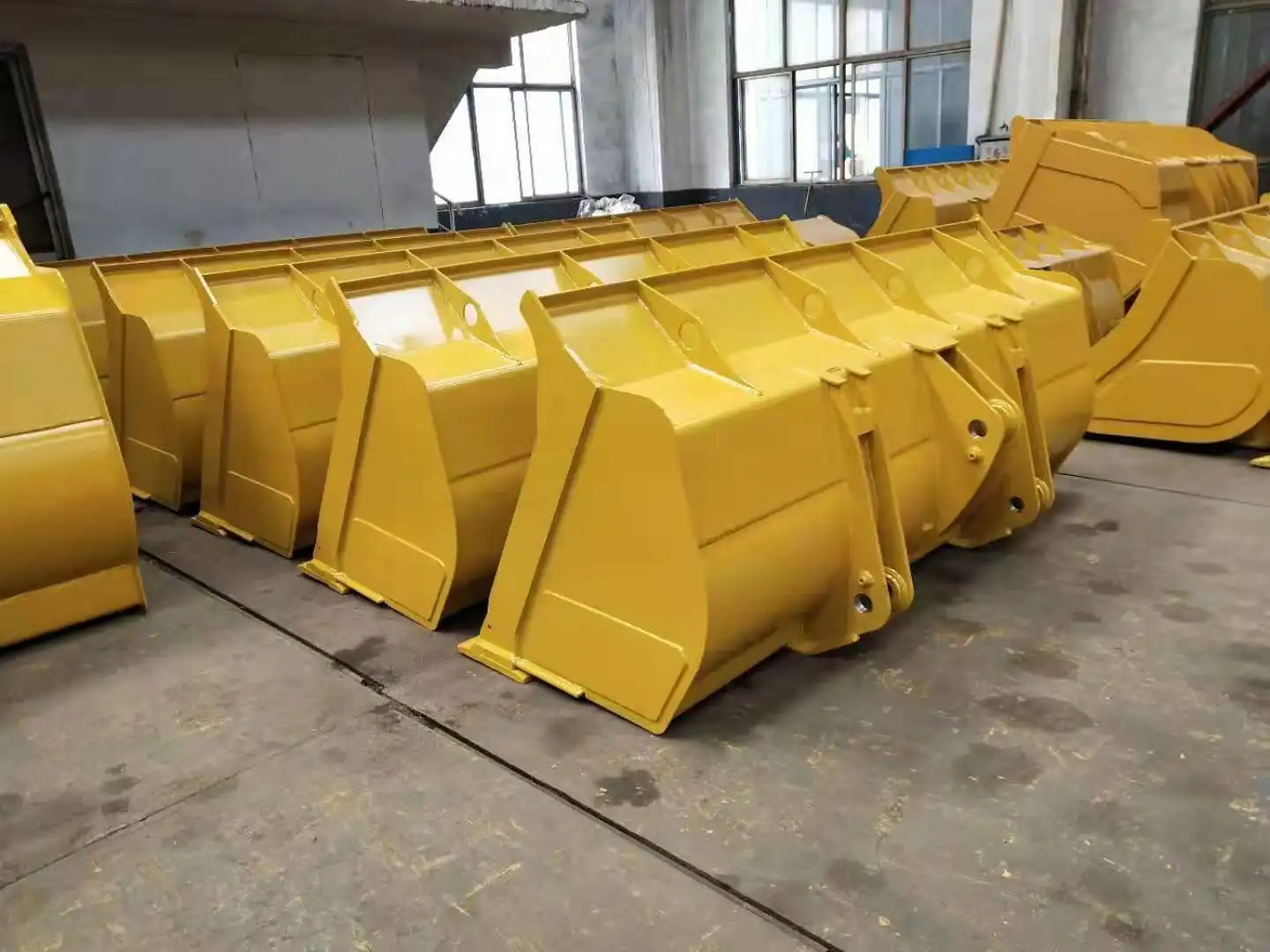
Design Features and Specifications
The general-purpose front loader bucket represents the standard configuration found on most wheel loaders and skid steers across construction sites worldwide. These versatile attachments feature a balanced design with moderate side profiles and floor angles optimized for penetration and material retention across diverse applications. The cutting edge typically incorporates a flat or slightly curved profile that facilitates clean scraping along surfaces while maintaining effective material collection. This universal design makes general-purpose buckets the predominant choice for operations involving varied materials and applications.
Construction specifications typically include reinforced side plates with thicknesses ranging from 0.25 inches on compact equipment to over 1 inch on production-class machines. The bucket floor incorporates strategic reinforcement at high-stress points while maintaining reasonable weight for optimal machine balance and fuel efficiency. Most designs feature replaceable wear components, including bolt-on cutting edges and heel plates that protect the bucket structure while providing economical maintenance pathways. These modular components extend bucket service life while maintaining consistent performance characteristics throughout the operational lifespan.
Capacity specifications follow consistent patterns across machine classes. Compact loaders typically utilize general-purpose buckets ranging from 0.5 to 1.5 cubic yards, while mid-size wheel loaders commonly feature capacities between 2 and 5 cubic yards. Large production loaders may employ general-purpose configurations with volumes exceeding 10 cubic yards for high-volume material movement. These standardized capacities align with machine lifting capabilities and hydraulic specifications, ensuring balanced performance across the equipment's operational range.
Maintenance and Operational Considerations
Proper maintenance significantly extends general-purpose front loader bucket service life while preserving operational efficiency. Daily inspection protocols should focus on cutting edge wear, which directly impacts penetration effectiveness and material retention. When edge wear exceeds manufacturer specifications (typically 1-2 inches of material loss), replacement maintains optimal performance while preventing structural damage to the bucket body. Weld inspections, particularly at high-stress points like side cutter joints and lift arm connections, prevent catastrophic failures during operation.
Operational techniques substantially influence bucket performance and longevity. Proper attack angles - typically maintaining the floor parallel to the ground during initial penetration - maximize filling efficiency while minimizing unnecessary wear. Avoiding impact loading against immovable objects prevents structural deformation that can permanently reduce capacity and compromise material retention. These fundamental operational practices extend service intervals while maintaining consistent performance throughout the equipment's operational life.
Wear protection systems offer substantial benefits for general-purpose applications. Bolt-on cutting edges provide economical wear surfaces that protect the bucket structure while maintaining effective ground engagement. Side cutters shield vulnerable corner areas from accelerated wear, particularly valuable when working against vertical surfaces or in confined spaces. For challenging applications, overlay protection - applying hardened weld material to high-wear areas - creates durable wear surfaces that substantially extend service intervals. These protective measures represent prudent investments that maintain productivity while reducing lifetime ownership costs.
Light Material Bucket

Design Characteristics
Light material buckets feature distinctive front loader bucket designs optimized for handling low-density materials. Their most prominent characteristic involves expanded volumetric capacity - typically 15-30% larger than general-purpose equivalents on the same machine class. This increased volume accommodates the lower weight-to-volume ratio of materials like mulch, wood chips, snow, and agricultural products without exceeding the machine's lifting capabilities. The expanded capacity dramatically improves operational efficiency when handling these materials, reducing required cycles and increasing hourly productivity.
Structural engineering follows specialized patterns that balance capacity with weight considerations. Side sheets typically extend higher than standard configurations while maintaining reasonable material thickness. Strategic reinforcement focuses on critical stress points rather than uniform strengthening, reducing overall weight while preserving structural integrity. The cutting edge often features a slightly modified profile optimized for materials that offer minimal penetration resistance. These engineering refinements create purpose-built attachments that maximize productivity for specific material categories.
Material Types and Volume Considerations
Material density classifications directly influence light bucket suitability. These specialized attachments perform optimally with materials ranging from 400 to 1,500 pounds per cubic yard - significantly lighter than the 2,000+ pounds typical of general construction aggregates. Common compatible materials include snow (approximately 500-900 pounds per cubic yard depending on moisture content), mulch (400-800 pounds per cubic yard), wood chips (500-700 pounds per cubic yard), and agricultural products like grain or silage (approximately 700-1,200 pounds per cubic yard). The expanded volume accommodates these materials without exceeding machine weight capacities.
Volume considerations impact operational planning with light material buckets. Their expanded capacity creates opportunities for dramatic productivity improvements - potentially reducing cycle counts by 20-30% compared to general-purpose alternatives. However, this increased volume requires appropriate material stockpile management to facilitate efficient bucket filling. Piles should be proportioned to accommodate the larger bucket dimensions, with sufficient material consolidation to enable effective penetration and filling. These operational adjustments maximize the productivity benefits offered by the specialized bucket design.
Rock Bucket

Heavy-Duty Construction Elements
Rock buckets feature reinforced front loader bucket construction designed specifically for handling abrasive, high-density materials in demanding environments. Their foundation begins with substantially thicker base materials - side plates typically 25-50% thicker than general-purpose equivalents provide the core structural integrity. Strategic internal reinforcement at high-stress points prevents deformation when handling extreme loads or experiencing impact forces during rock handling operations. This robust construction creates a durable platform capable of withstanding the punishing conditions encountered in quarry, mining, and heavy construction applications.
The cutting edge system represents a critical engineering focus for rock bucket designs. V-edge configurations, featuring an angled rather than flat attack profile, improve penetration into tightly packed or partially blasted material. Tooth systems with replaceable adapters and points create concentrated breakout force that fractures consolidated materials while protecting the bucket structure. These tooth systems typically offer multiple point profiles optimized for different material characteristics - from sharper designs for hard rock penetration to broader profiles for handling processed aggregates. This modular approach allows configuration refinement based on specific operational requirements.
Wear protection systems receive extraordinary attention in rock bucket engineering. Replaceable wear plates shield vulnerable areas from accelerated wear, particularly the bucket floor and lower side sections that experience continuous abrasion during loading operations. Heel plates protect the critical junction between the cutting edge and bucket floor where stress concentration can lead to premature failure. Many designs incorporate overlay protection - applying hardened wear-resistant material through specialized welding processes - that extends service life in extremely abrasive conditions. These comprehensive protection systems maintain bucket performance while controlling lifetime ownership costs in challenging applications.
Performance in Quarry and Mining Operations
Quarry operations highlight the specialized advantages of rock front loader bucket designs. Their reinforced construction withstands the continuous impact loading encountered when handling freshly blasted material. The specialized cutting edge configuration effectively penetrates loose rock piles while providing the necessary breakout force for partially consolidated materials. Substantial heal protection prevents accelerated wear when loading from solid surfaces typical in quarry environments. These performance characteristics maintain productivity in demanding applications where standard bucket designs would experience accelerated wear and compromised efficiency.
Mining applications place extraordinary demands on loader attachments, requiring specialized rock bucket features. Enhanced protection systems guard against the highly abrasive nature of many ore materials. Reinforced lift arm connections withstand the substantial forces encountered when handling high-density materials like iron ore or copper-bearing rock. Some specialized mining buckets incorporate unique features like rock ejectors - internal structures that prevent material packing in bucket corners - particularly valuable when handling sticky materials that tend to build up over time. These mining-specific refinements address the unique challenges encountered in mineral extraction operations.
Production metrics demonstrate the substantial impact of proper bucket selection for rock handling applications. Purpose-built rock buckets typically maintain 90-95% efficiency throughout their service life when properly maintained, compared to 70-80% for general-purpose designs pressed into rock handling roles. This performance differential becomes particularly pronounced in high-volume operations where even small efficiency losses translate to substantial productivity impacts. The initial investment premium for specialized rock buckets - typically 15-30% above general-purpose alternatives - yields significant returns through improved performance and extended service life in appropriate applications.
FAQ
1. How do I choose the right bucket for my front end loader?
Selecting the appropriate loader bucket requires evaluating several interconnected factors: materials, predominant applications, and operational environment.
2 . What maintenance practices extend bucket service life?
Proactive maintenance significantly extends front loader bucket service life while preserving operational efficiency. Implement daily inspection protocols focusing on cutting edges and tooth systems, which directly impact penetration effectiveness and material retention. When edge wear exceeds manufacturer specifications, prompt replacement prevents structural damage to the bucket body. Regularly inspect wear plates and protection systems, replacing components before wear compromises underlying structural elements.
3. Can I use a general-purpose bucket for all applications?
General-purpose buckets handle most construction materials effectively but face significant limitations in extreme conditions. When handling high-volumes of light materials like mulch or snow, the limited capacity of general-purpose designs reduces productivity by 20-30% compared to light material alternatives. In rock handling applications, general-purpose buckets experience accelerated wear and potential structural damage without the reinforcement found in dedicated rock designs.
4. What innovations are emerging in loader bucket technology?
Recent innovations in front loader bucket technology focus on enhancing durability, productivity, and operator experience.
Bucket Loader For Sale
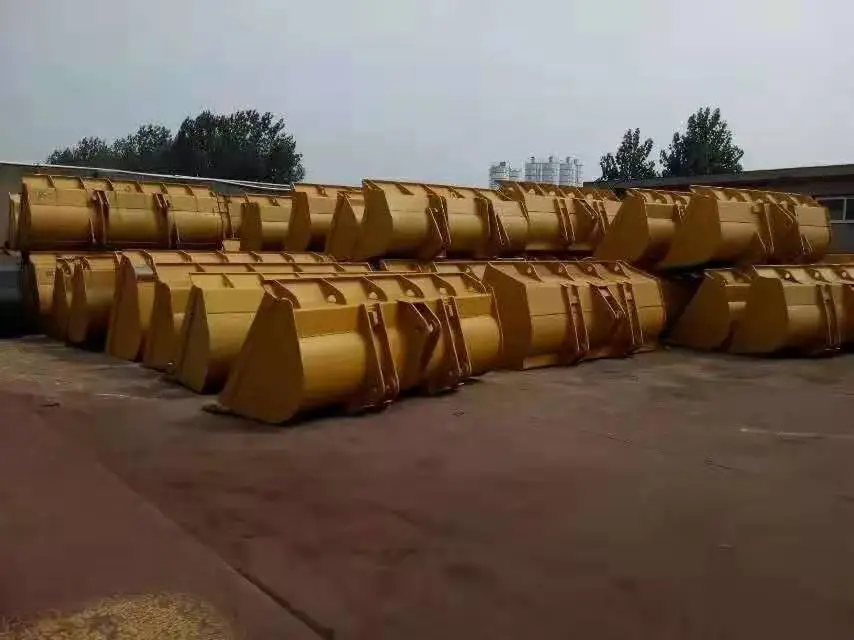
Seeking to enhance your loading efficiency? Tiannuo's front loader bucket is the solution. With a design like the Shante ZL50 model, our bucket has a width of 2.24 m, a bottom width of 0.5969 m, and a depth of 0.025 m. It also comes with a rated load of 5000 kg, an unloading height of 3090 mm, and a maximum breakout force of 170 kN. Don't wait any longer. Get in touch with us at arm@stnd-machinery.com, rich@stnd-machinery.com, or tn@stnd-machinery.com to discover how our bucket can transform your operations.
References
Association of Equipment Manufacturers (2023). "Standardized Testing Protocols for Earth-Moving Attachments."
Journal of Construction Engineering and Management (2024). "Performance Analysis of Specialized Bucket Configurations in Various Material Applications."
International Mining Equipment Review (2023). "Advanced Materials in Mining Attachment Construction."
Heavy Equipment Technical Institute (2024). "Comparative Analysis of Bucket Designs and Performance Characteristics."
Construction Materials Processing Journal (2023). "Optimizing Material Handling Equipment for Specific Aggregate Applications."
Engineering Research Consortium (2024). "Wear Dynamics in Heavy-Duty Earth-Moving Equipment."
About Author: Arm
Arm is a leading expert in the field of specialized construction and railway maintenance equipment, working at Tiannuo Company.
YOU MAY LIKE
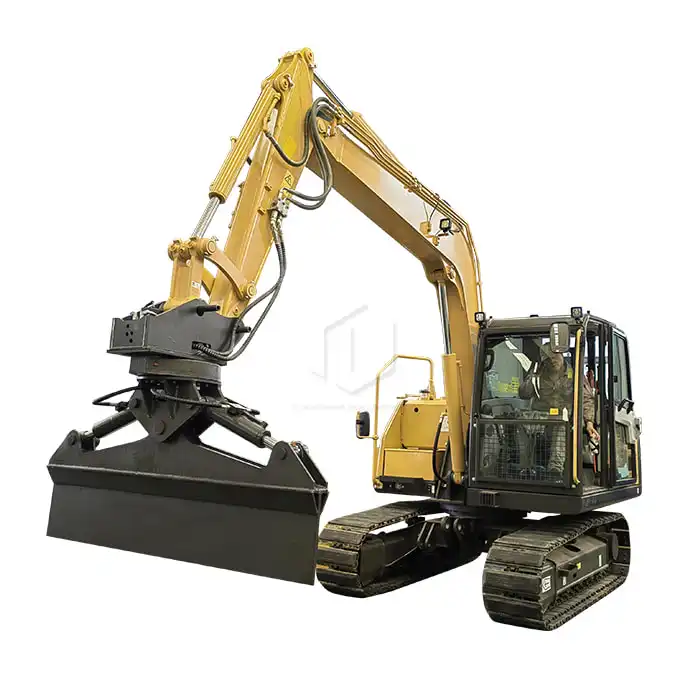 VIEW MOREExcavator Railway Slope Cleaning Machine
VIEW MOREExcavator Railway Slope Cleaning Machine VIEW MORERailway excavator dustpan bucket
VIEW MORERailway excavator dustpan bucket_1733877348138.jpg) VIEW MORELoader Tire Protection Chain
VIEW MORELoader Tire Protection Chain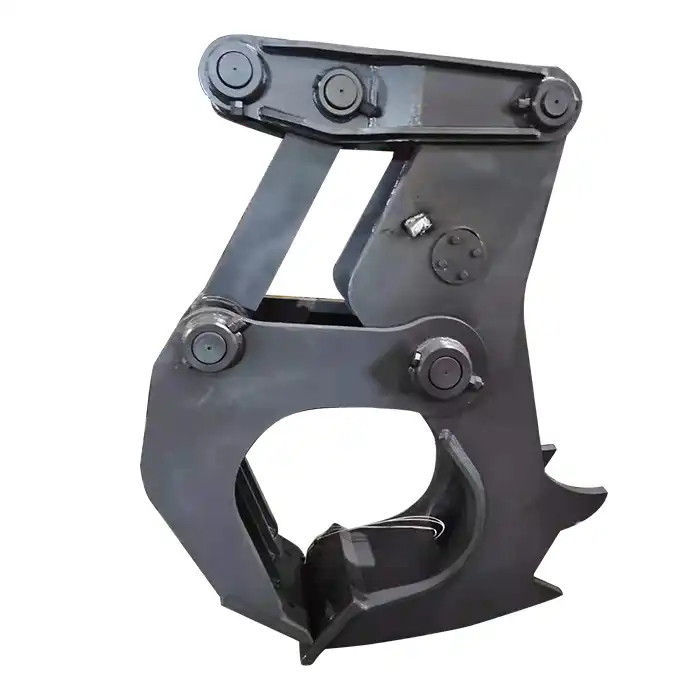 VIEW MOREExcavator Wood Splitter
VIEW MOREExcavator Wood Splitter VIEW MOREExcavator High Altitude Demolition Arm
VIEW MOREExcavator High Altitude Demolition Arm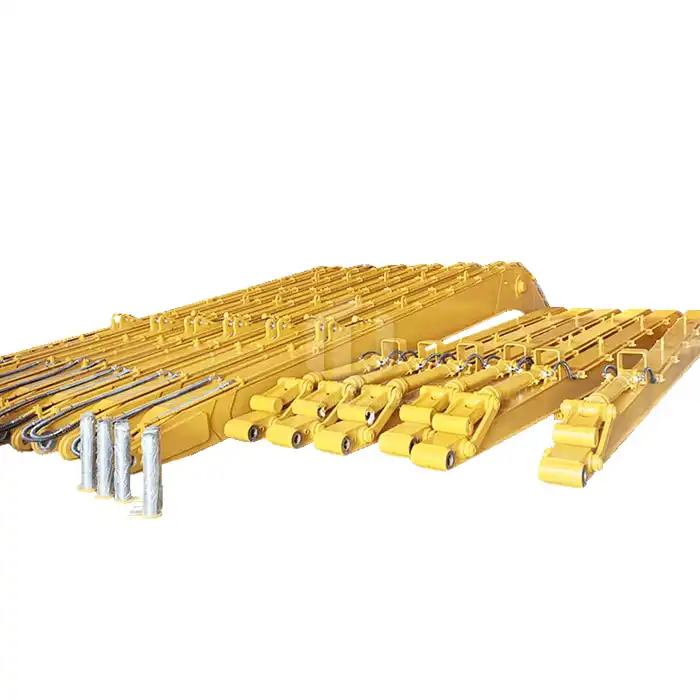 VIEW MOREExcavator Extension Arm
VIEW MOREExcavator Extension Arm VIEW MORESeaside Excavator Heightening Column
VIEW MORESeaside Excavator Heightening Column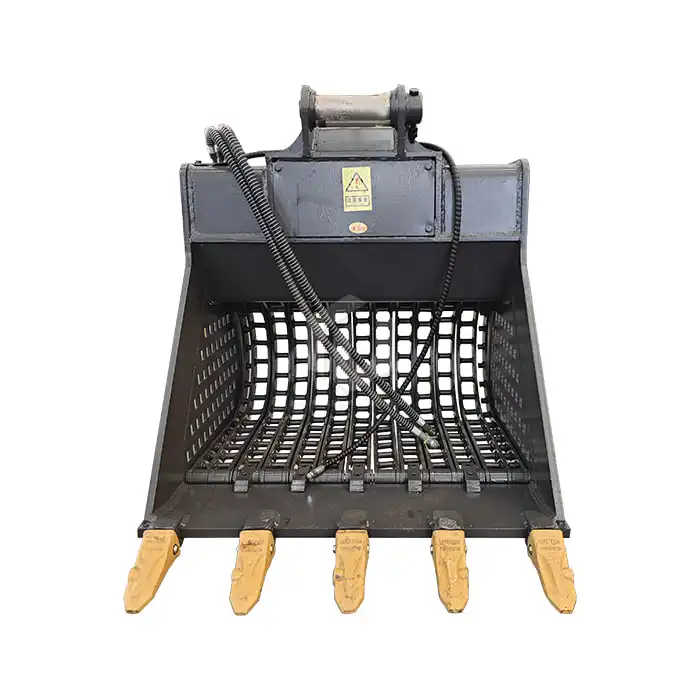 VIEW MOREExcavator Screening Bucket
VIEW MOREExcavator Screening Bucket

